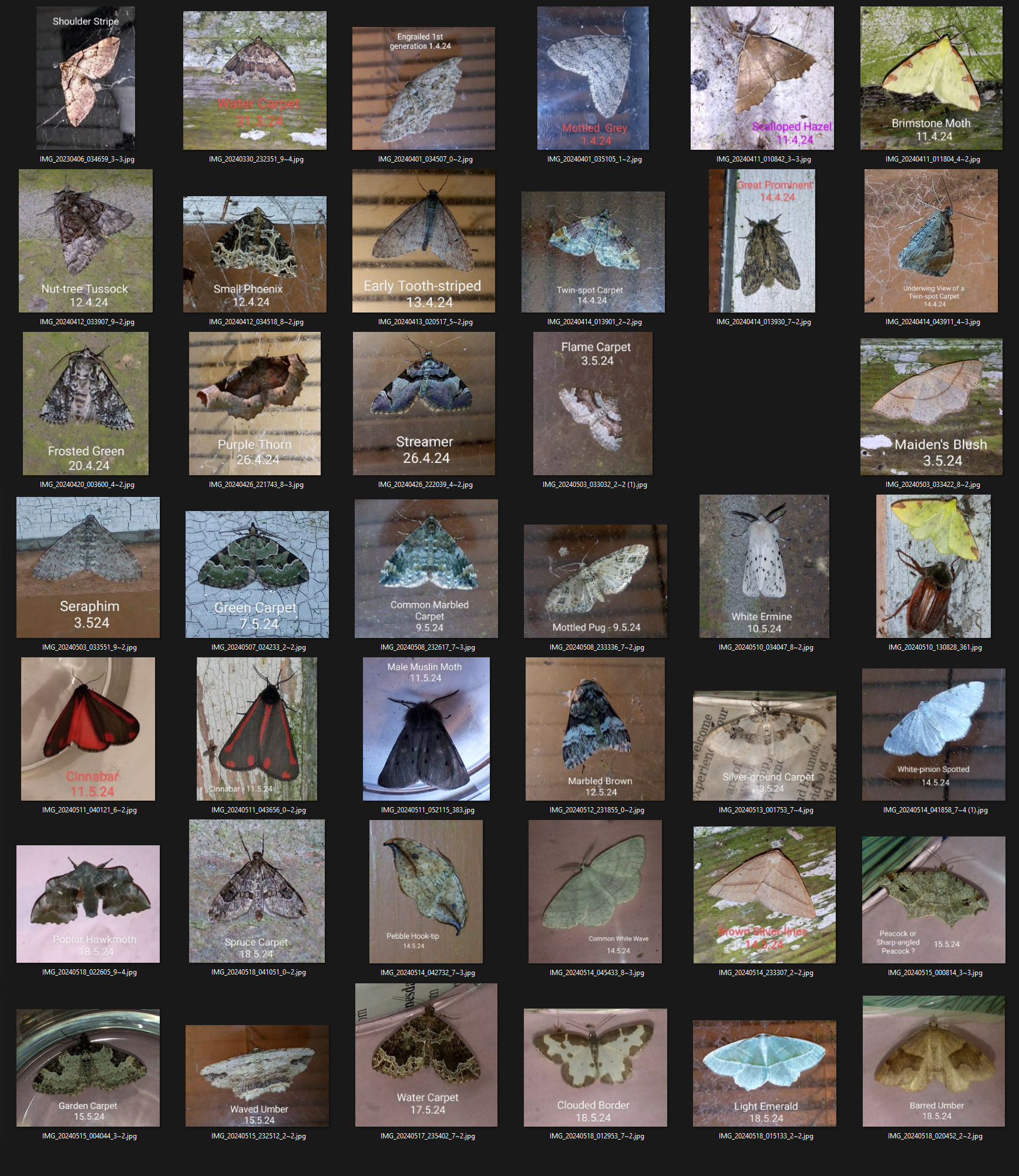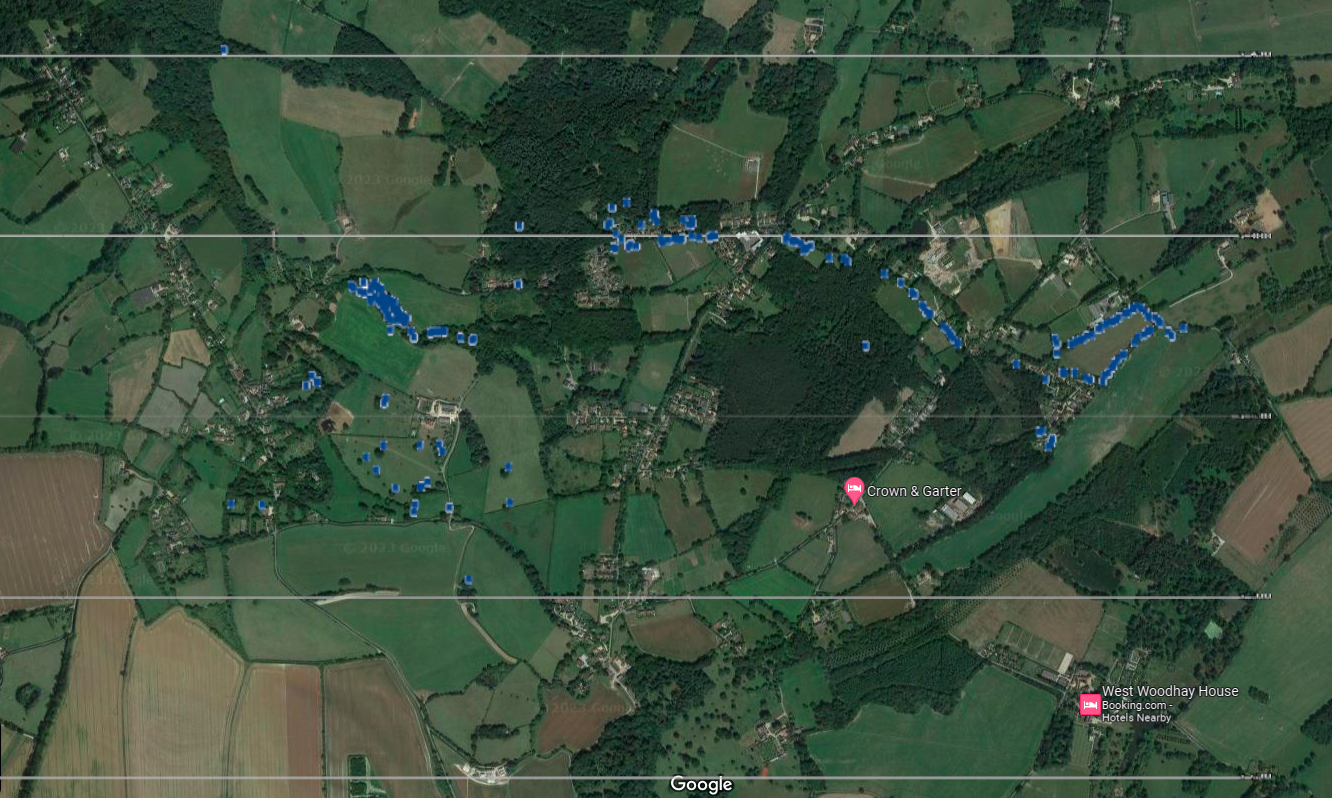Historic weather changes in Inkpen are available at climate.inkpenvillage.co.uk.
The Age of Trees.
Inkpen's landscape was once covered in trees. It was part of the Savernake forest. Clearance of trees to create farming land took off on Saxon times. Oak trees were prized up until the early 1900s for their use in boat building. Lord Craven's estate held frequent sales of oak trees for all kinds of uses, so finding old oaks in what remains is uncommon. One thing that is clear in Inkpen is that roads are frequently lined with oak's. Coming from any direction into inkpen, you will see oak trees.
In 2023 we started measuring the girth of oak trees so as to assess a trees age. There is a simple rule of thumb enabling the determination of the age of oaks from this simple measurement. What has to be taken into account is the position of the oak tree. Trees inside woodland grow at a slower rate than those on the perimeter. Those in good soil grow at a faster rate than those in poor soil. So there's some flexibility when it comes to interpreting a rule of thumb. The best way to get some value for the relationship between girth and age is to measure the girth of fallen trees and count the tree rings. We ended up with a value of just over half the girth equal to the age of the tree.
The image below marks the position of measured oaks with a little blue dot.
Oaks of age on field boundaries often grow at an accelerated age relative to those within woodland, but they are few. Manor Farm had the best collection to date.
More work needs to be done on this with the remaining roads and woodland surveyed.
The importance of old trees, especially oak trees, is shown here.
Moths
In 2004, Stephen Painting conducted a survey of moths throughout the year. The results are here. In 2024, twenty years on, we repeated the survey to try and see if climate change is having an effect on insect populations. The results are shown here.

Insect data is considered to be one of the key markers for climate change.
Our history society strongly supports the North Wessex Downs National Landscape initiative on dark skies. Most insects are nocturnal and the considerable and often unnecessary use of lights in our modern lives often frustrates the natural life cycle of insects, in particular, flying insects such as moths and beetles. Just eliminating out door light can pay huge dividends. The following video was shot using IR cameras on a warm summers evening in 2024.
Beetles
Our measurement of trees, and the recording of weather and moths provides a basis for our ongoing assessment of climate change impact. We have to have a starting point. These are all visible and fairly obvious indicators. But there are less obvious and arguably more important effects of climate change. One of these is the rate of decomposition of vegetation, the recycling of the ingredients for new growth. Temperature and humidity play a key role in this but the thing that most often mixes decomposing vegetation is beetles and worms.
The last survey of beetles was conducted at the common, Heads Lane, over the period 1998 to 2012. A print-out of the results is available here.
During
the period August 2009 to October 2016, Mike Stabler wrote a
regular piece on local nature for the Inkpen and Combe bulletin.
Mike was a keen conservationist. He recognised the importance of
the natural order and in many respects was ahead of his time. The
table below contains a few of Mike’s bi-monthly contributions. Dip
in and see what the past has to tell you.
|
|
|
|
|
|
|
|
|
|
|
|
|
|
|
|
|
||||
|
|
|
|
|||
|
|
 IHS
IHS